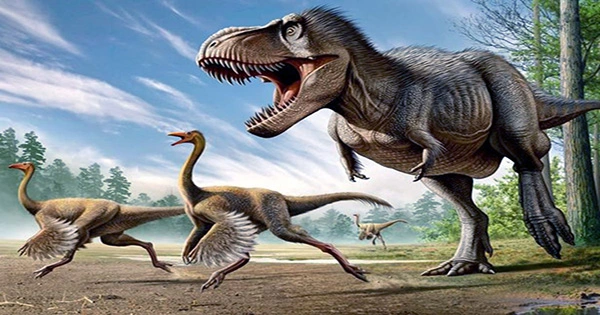T-rex arms and their diminutive stature contrast with the tall torso of what is commonly believed to be one of the most fearsome predatory dinosaurs ever to walk the face of the planet. However, Tyrannosaurus rex isn’t the only dinosaur to have exhibited this phenotypic, raising the question of whether having small limbs has any advantages for apex predators. Palaeontologist Kevin Padian has pondered the riddle of T-rex arms’ diminutive size, having been frequently questioned by students at the University of California, Berkeley, where he is Professor of Integrative Biology, about what business they had being so little. His previous position on the subject had been “no one knows,” until he chose to publish his own theory in the journal Acta Palaeontologia Polonica.
HOW COME T-REX ARMS WERE SO SMALL? T-rex may have hunted in packs, similar to wolves, and multiple dinosaurs may have congregated around a carcass even if they didn’t kill it as a group. Padian believes that having dodgy T-rex arms might have helped in this situation. “What if a group of adult tyrannosaurs came together to eat a carcass?” You have a swarm of huge skulls ripping and devouring flesh and bone right next to you, with immensely powerful jaws and fangs. What if one of your friends feels you’re becoming too close?” Padian made a claim.
“They might sever your arm to scare you away.” Crocodiles and alligators have been witnessed mistakenly amputating the limbs of their fellow reptiles during a feeding frenzy, therefore this type of cannibalism isn’t unprecedented. If T-rex faced a similar challenge, having such little arms would have been beneficial rather than a hindrance.
“Reducing the forelimbs could be beneficial,” Padian added, “because you’re not using them in predation anyhow.” In general, evolution favors adaptations that make animals more adaptable to their surroundings and considering that T-rex ancestors had longer arms, it’s reasonable to assume that the reduction of the forelimbs provided some benefit to these animals.
“None of the [existing] explanations explain why [T-rex] arms would shrink — the best they could do is explain why they would stay small,” Padian concluded. “And in every case, if the arms had not been lowered, all of the intended functions would have been far more successful.”
T-REX ARMS: HOW SMALL WERE THEY? T-rex arms were so little that when Barnum Brown discovered the first fossil remnants in 1900, he couldn’t believe the arm bones could conceivably belong to the same dinosaur.
A 14-meter-long (45-foot) T-rex with a 1.5-meter-long (5-foot) skull would have had arms that were less than a meter long. That’s the same as a 1.8-meter (6-foot) person with arms that are just 13 centimeters (5 inches) long. As for the reason or evolutionary pressure that led to T-rex arms being so little, Padian concedes that finding an answer will be difficult. Demonstrating theories becomes a little more difficult when they include species that died off around 66 million years ago.
















